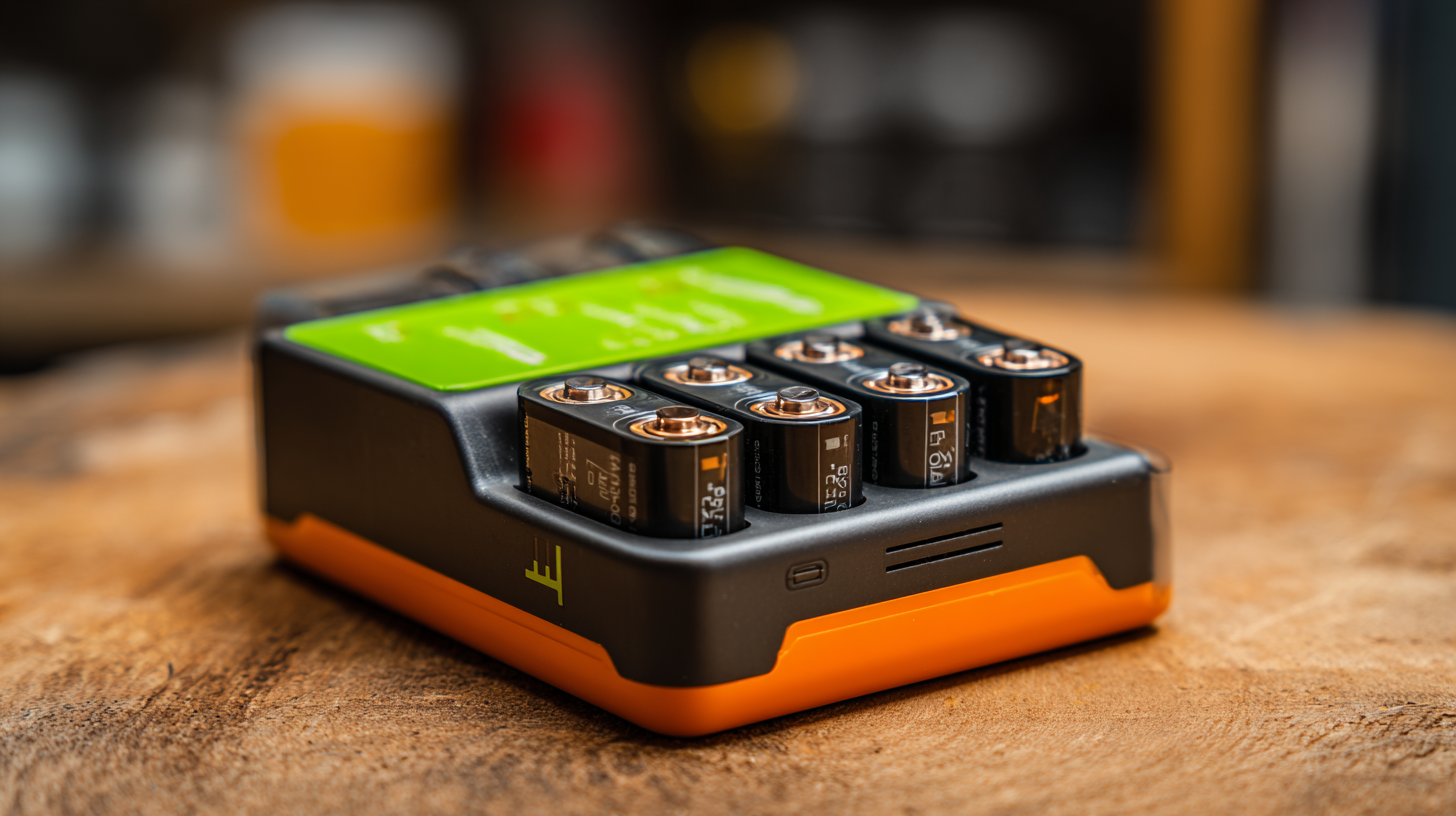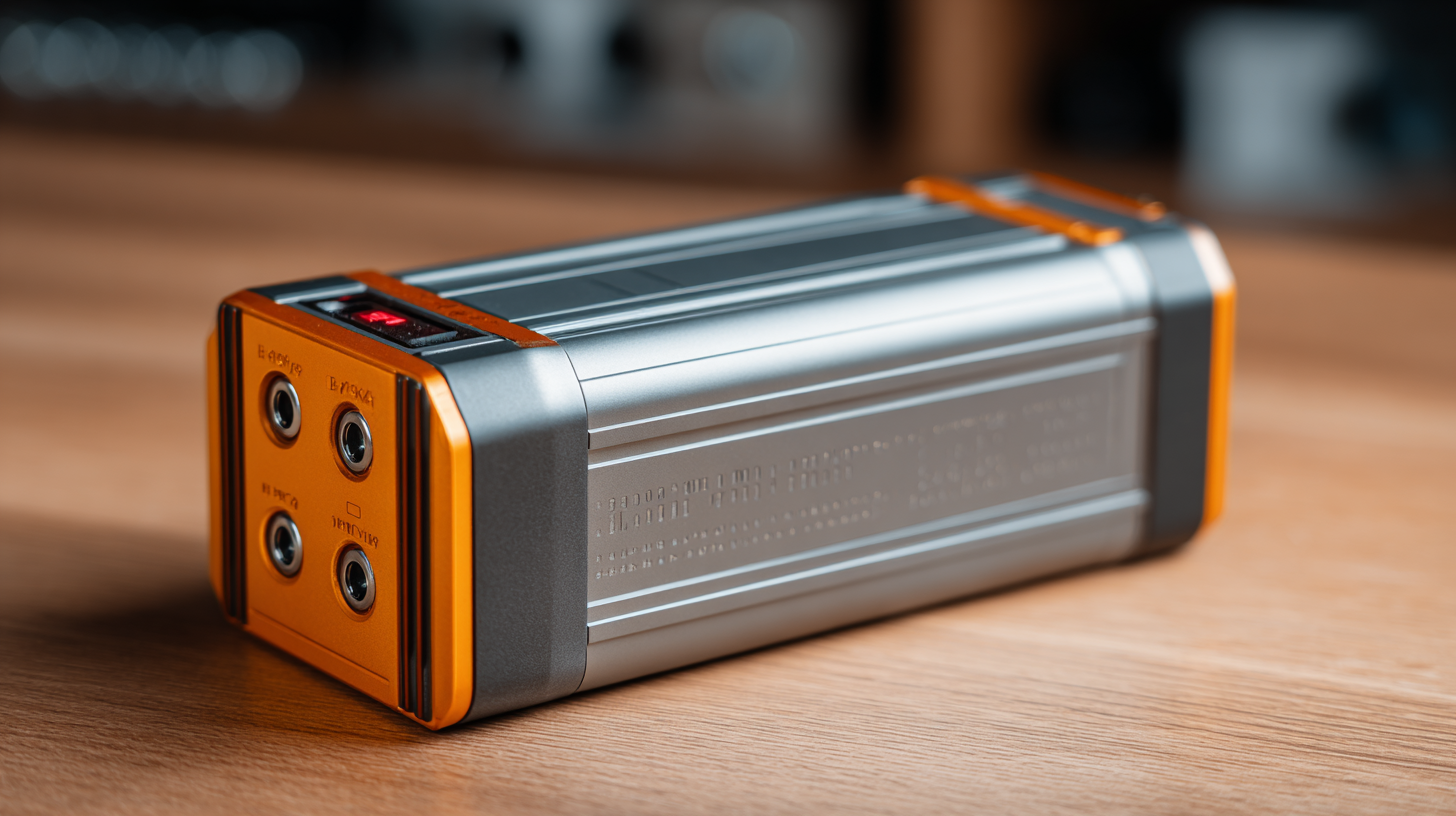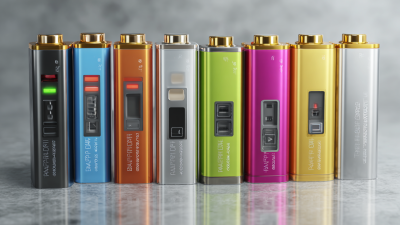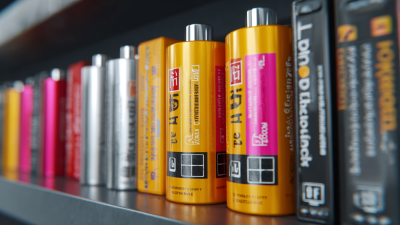In an era where portable power solutions are essential, Lithium Battery Packs have emerged as the cornerstone of modern energy storage and usage. As industries increasingly rely on reliable energy sources, the demand for advanced lithium battery technologies has surged. According to a recent Market Research Future report, the global lithium-ion battery market is projected to reach over $130 billion by 2025, driven by the growing adoption of electric vehicles and renewable energy systems. This significant growth underscores the importance of selecting the right Lithium Battery Pack tailored to specific power needs.
Experts in the field, like Dr. Emily Johnson, a leading researcher at the Battery Innovation Center, emphasize the impact of these technologies: "The evolution of Lithium Battery Packs is pivotal in enhancing energy efficiency and sustainability across various applications." This assertion highlights the growing relevance of lithium batteries in consumer electronics, electric vehicles, and even large-scale energy storage solutions. As we explore the top 10 best Lithium Battery Packs available, it's crucial to consider their performance metrics, safety features, and overall value to ensure that users can make informed decisions that align with their energy demands.

When choosing the best lithium battery packs for your needs, there are several key considerations to keep in mind. First and foremost, capacity is crucial. Measured in ampere-hours (Ah), capacity determines how long your device will operate before needing a recharge. According to a report by Allied Market Research, the global lithium-ion battery market is expected to reach $129.3 billion by 2027, highlighting the increasing demand for high-capacity battery solutions. Therefore, selecting a battery pack that offers sufficient capacity for your applications can significantly enhance performance.
Another vital factor to consider is the discharge rate, which indicates how quickly a battery can provide power. The discharge rate affects everything from the initial burst of power in applications like power tools to the sustained energy for electric vehicles. A study published by IDTechEx underscores that a higher discharge rate can lead to better efficiency and performance in demanding situations. Additionally, it’s important to examine thermal management features, as overheating can reduce battery lifespan; advanced lithium battery packs often integrate thermal regulation systems to mitigate these risks effectively. These considerations will ensure you select a lithium battery pack that meets your performance requirements while also maximizing longevity and safety.
Lithium battery packs come in various sizes and specifications, each tailored to meet different energy demands and applications. Understanding these variances is crucial for both consumers and manufacturers as they navigate the rapidly evolving electric vehicle (EV) market. With advancements in technology, the emphasis on smaller, lighter battery packs that deliver increased efficiency is becoming more pronounced. For instance, the latest innovations focus on lithium iron phosphate (LFP) batteries, which not only enhance energy storage but also optimize power consumption per mile traveled.
Moreover, the development of regional battery industries, particularly in resource-rich areas, signifies a strategic shift towards local battery production. By harnessing materials like cobalt and copper, countries are positioning themselves to strengthen their supply chains and meet the soaring global demand for high-quality batteries. This focus on locality will also drive down costs and improve the sustainability of battery manufacturing processes, paving the way for a more eco-friendly approach to energy storage solutions.
| Model | Capacity (mAh) | Voltage (V) | Size (mm) | Weight (g) | Cycle Life | Applications |
|---|---|---|---|---|---|---|
| Pack A | 5000 | 3.7 | 150 x 100 x 10 | 300 | 1000 | Drones, Power Tools |
| Pack B | 10000 | 3.2 | 200 x 150 x 15 | 600 | 1500 | Electric Bikes |
| Pack C | 3000 | 3.7 | 120 x 80 x 8 | 250 | 800 | Portable Devices |
| Pack D | 7500 | 3.7 | 175 x 120 x 12 | 450 | 1200 | Robotics |
| Pack E | 6000 | 3.7 | 160 x 100 x 10 | 400 | 900 | Electric Scooters |
| Pack F | 12000 | 3.7 | 210 x 150 x 15 | 900 | 1800 | Grid Storage |
| Pack G | 4000 | 3.6 | 140 x 90 x 9 | 320 | 700 | Camera Equipment |
| Pack H | 8500 | 3.7 | 190 x 110 x 13 | 550 | 1300 | Medical Devices |
| Pack I | 9500 | 3.8 | 200 x 140 x 14 | 700 | 1600 | Electric Vehicles |
| Pack J | 3000 | 3.7 | 125 x 85 x 7 | 200 | 600 | Smart Gadgets |
When comparing the performance features of leading lithium battery brands, several key factors come into play, such as energy density, charge cycles, and discharge rates. According to a recent report by Research and Markets, the global lithium-ion battery market is projected to reach approximately $129 billion by 2027, driven by the increasing demand for electric vehicles and portable electronics. Batteries from brands like Tesla, LG Chem, and Panasonic consistently demonstrate higher energy densities, averaging between 150 to 250 Wh/kg, which translates to longer usage times for devices and vehicles.

Another critical metric is the lifespan measured in charge cycles. Industry studies indicate that high-quality lithium batteries can endure between 500 to 1500 full charge cycles before significant capacity loss. Brands such as A123 Systems have been noted for their impressive cycle life performance, particularly in demanding applications like electric transportation. Additionally, discharge rates—often measured in C-rate—are vital for applications requiring high bursts of power; most leading brands offer rates between 1C to 10C, ensuring they meet the immediate energy demands of modern technology. This detailed comparison elucidates why choosing the right lithium battery is essential for optimal performance across sectors.
Lithium battery packs have become essential for a wide range of applications, from electric vehicles to portable electronics. To maximize the lifespan of these batteries, it is crucial to implement proper maintenance strategies. According to a report by the International Energy Agency (IEA), careful management of charging cycles can enhance a lithium battery’s lifespan significantly. By avoiding complete discharges and limiting charge levels to 80% whenever possible, users can extend battery longevity by up to 20%.
Temperature control is another vital factor in prolonging the life of lithium batteries. The Battery University reports that keeping the operating temperature between 20°C and 25°C (68°F to 77°F) can result in a remarkable increase in battery performance. High heat is known to cause detrimental chemical reactions within the battery cells, which can lead to decreased capacity and efficiency. Implementing these temperature regulations, along with thoughtful charging habits, can greatly improve the overall durability and efficiency of lithium battery packs, making them the ultimate power solution for any tech enthusiast.

When it comes to using and maintaining lithium battery packs, safety is paramount. Lithium batteries have numerous advantages, but they also come with inherent risks. To mitigate these, users should adhere to strict safety guidelines before, during, and after usage. This includes regular inspections for damage and leakage, ensuring batteries are stored in a cool, dry place away from direct sunlight, and only using chargers that are specifically designed for the battery type. Additionally, users should be cautious of the environments in which these batteries are utilized, particularly when considering applications in marine vessels or automated systems.
The recent focus on lithium batteries in heavy-duty applications, such as their deployment in emergency vessels, highlights the need for stringent safety measures. As these batteries power more critical systems, understanding the potential hazards—such as fire or explosion risks during transportation—becomes increasingly important. New regulations and guidelines, like those from various regulatory bodies, aim to standardize safety protocols, ensuring that manufacturers and users can navigate the complexities of lithium battery maintenance and usage safely. Continuous education and adherence to safety standards will help maximize the benefits of these powerful energy solutions while minimizing their risks.
This chart displays the power output in watt-hours (Wh) of the top 10 best lithium battery packs, showcasing their capabilities for various applications.








